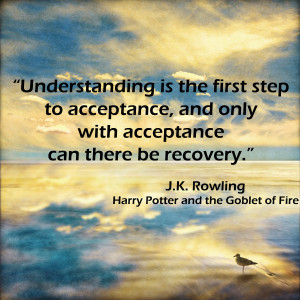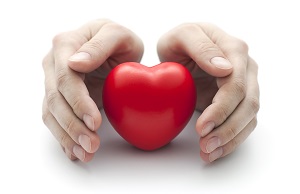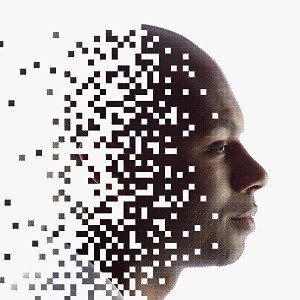23 Apr 2013
MLB Ramping Up PED Probe
After the investigation into Lance Armstrong’s drug use, every professional athlete who has taken a performance-enhancing substance may be looking over his shoulder. Major League Baseball seems to be the second most investigated sport after cycling, with its biggest players fighting for months on end against drug probes. The Bay Area Laboratory Co-operative case against slugger Barry Bonds is a good example of how aggressively a player can be pursued.
Records from the Biogenesis Clinic in Miami, which revealed the names of 90 baseball players, are a veritable who’s who of possible dopers in baseball. Investigators will likely start their interrogation of these players within the next few weeks, an insider told USA Today. The penalty for not complying with questions from investigators could mean suspension, so it is likely that these players with something to hide will do what they can to keep themselves out of the hot seat.
 In March, Major League Baseball sued Biogenesis and its operators, accusing them of scheming to provide banned PEDs to players in violation of their contracts.
In March, Major League Baseball sued Biogenesis and its operators, accusing them of scheming to provide banned PEDs to players in violation of their contracts.
But as with the penal system, without evidence that is solid, no player will face sanctions. When Armstrong went down, it was not because of positive drug tests, it was from testimony taken from his longtime teammates and coaches. While the merits of the investigation against Armstrong may not seem fair, the result is a lifetime ban from sanctioned sporting events. Given the rumors surrounding a recent investigation of a five-time all star, it looks as if the same tactics will be in play at the MLB level.
The player in question is Ryan Braun of the Milwaukee Brewers. The all-star out-fielder appealed a positive test and won, making him the only player to pull off such a feat. But not unlike the Armstrong affair, the league office is looking to testimony from other players to help nail Braun. It’s been rumored that some players will be granted immunity for their testimony against him.
22 Apr 2013
Coping With the Stigmas of Addiction and Prison
Many conditions and situations carry an unfortunate stigma: poverty, mental illness, addiction and going to prison are not least among them. Those who have not experienced these situations or who have no relationship to anyone plagued by the disease of addiction are often quick to judge. Addiction, in particular, carries a stigma associated with weakness, poor moral character and a lack of willpower. Couple that with the fact that many addicts end up in prison for drug-related crimes and you have a double whammy of judgment and stigma. Anyone who has been to prison, regardless of the reason, must carry that burden forever.
Stigma is a terrible thing to cope with; all addicts understand this. They can describe how people look at them differently, that others fail to trust them for no other reason than their disease, and they know that many people look on them as being deeply flawed. Dealing with that stigma makes it difficult to get into recovery, to admit to having a problem, and to find the courage to get help. Coming out of prison only makes this worse. If you have served time and you face a battle with addiction, there are steps you can take to cope with the unavoidable stigma.
- Get treatment. This point cannot be overstated. The only way you will conquer your addiction is to get professional help. If you have already received treatment, maybe while incarcerated, that does not mean you are at the end of the road. The pressure of the stigma placed upon you by others is a powerful force and one that may contribute to a relapse. Keep up with treatment, even if it means just attending an occasional support group meeting. If you are really struggling, see a trained drug counselor or therapist for some sessions. When you are fully in recovery, the stigma will start to seem less important and will be less damaging.
- Fight feelings of shame and doubt. This may be easier said than done, but it is crucial that you do not let yourself feel the things that represent how others view you. Just because the public at large thinks you are lazy, weak-willed, morally bankrupt, and shameful does not mean that you are. You are what you want to be. You must create the person you want to be, regardless of what others say and think. Always remember that addiction is a disease; it is not a personal weakness or flaw.
- Socialize. It may be tempting to hide away after getting out of prison. Fear of what others will think and what they will say about you is enough to make you want to stay inside and lock the doors, but this is not good for you or your recovery. Isolation will only increase your negative feelings. Be brave and get back out there. Go out with sober friends, go to church and participate in Bible study, get involved in social groups, and consider doing volunteer work. All of these things will take you out of yourself and your dark thoughts and put your energy into more positive activities.
- Join a support group. If you are not already a member of a support group for addicts, join one now. Attending the meetings is a powerful way to stay clean and to take comfort from others who understand your experiences. You may even meet some addicts who have also spent time in prison. Seeing that you are not alone is helpful, because carrying the stigma of addiction as well as one for incarceration can make you feel like you are the only one. If you are new to sobriety or newly out of prison, you will also be able to find inspiration from others at these meetings. People who are years sober still attend meetings and can give you a guide and a model for how to live your life.
- Work on your relationships. In your former life as an addict, you probably did some serious damage to your personal relationships. Going to prison certainly did not help. Now is the time to rebuild those relationships and to regain the trust of the ones you love. When you have them fully back on your side, you can face down any stigma.
The quest to outlaw legal highs has been described as both a “game of cat and mouse” and “whack-a-mole,” and these descriptions convey the issues faced by law enforcement perfectly. The tricks employed by the illicit chemists enable them to avoid authorities, and it seems that no matter what the government does, loopholes are found. Understanding the techniques used in the manufacture of the drugs and how the chemists manage to avoid even the most recent legislation reveals why designer drugs can be as dangerous (if not more so) as their well-established illegal counterparts.
Altering the Chemical Structure
This is the most commonly used strategy for avoiding existing law. The process is pretty simple: the chemical structure of illegal drugs is what creates their effects, and similar structures are likely to have similar effects. Traditionally, the law bans specific substances, and this means that if the chemical structure is different, the substance isn’t technically illegal. If a law bans a specific substance, all the chemists would have to do is create an alternative formulation to make it legal. This is how the cat-and-mouse chase continues, and, inevitably, the law is a step or two behind the chemists. Until recently, this was the only method the federal government had to combat the constant influx of drugs; a little like trying to stop a swarm of ants by spearing them one by one with a single pin.
Labels
Two of the most famous designer drugs of recent years, “spice” and “bath salts” both used the label “Not for Human Consumption” to avoid legislation. This label allows the substances to legally enter the market without undergoing FDA testing to check for any similarity to illegal drugs. Hand sanitizer, for example, can be abused because it can be up to 60 percent alcohol. However, because it isn’t intended for human consumption, the fact that it contains alcohol isn’t really important. This loophole is commonly exploited by designer drug manufacturers.
New Legislation
In 2012, new rules were introduced that changed the method of combating the spread of designer drugs. Instead of outlawing only specific substances, the new rules include the Federal Analogue Act, which allows substances to be declared illegal if they are structurally similar or produce similar effects to known illegal substances. There is also a provision in the law that allows emergency bans, which can be very useful in reducing the risks associated with untested new chemicals.
The Problems
Although the new laws allow for a much more flexible approach for determining which substances should be illegal, there are still issues with the strategy. For one, it is unrealistic to assume that no new compounds (without similarities to existing controlled substances) could possibly be created in the near future, but the bigger issue is that the definition of “similar” is not set in stone. With no benchmark against which to measure the similarity of substances, prosecuting the drug makers under the new legislation isn’t as simple as it sounds.
A report from the Tampa Bay Times indicates that lawyers aren’t confident in the new legislation because of this vague language. In Florida, the new act has never been used for that reason. The cases that do occur generally boil down to one attorney pointing out the various similarities between the substances, and the other attorney highlighting all of the differences between them.
There is also an additional problem: Under the law, in order to be prosecuted, manufacturers have to be aware that the substances they created were similar to something illegal. This clause is inserted to prevent innocent chemists from being victimized for chance chemical similarity, but it has the potential to be abused by illicit manufacturers. If they make the simple claim that they were unaware of the similarity to an illegal drug, punishing them is made exponentially more challenging.
The Future
Although the new legislation isn’t air-tight, it does represent a positive step forward in controlling designer drugs. It seems reasonable that there will always be manufacturers who exploit loopholes, but as more and more of them are closed, producing anything that is arguably legal will become more difficult.
Marijuana is now legal as a recreational drug in the states of Washington and Colorado and as a medical product in most other states. The shifting legality of this drug reflects changes in societal views. While pot was once considered to be the drug of young stoners and slackers, it is becoming more socially acceptable to use occasionally for recreation. Many people are starting to see it as something like alcohol that should be legalized, but restricted.
In spite of changing views and attitudes toward marijuana, it is still an intoxicating substance that can cause harm. Several decades ago, the potency of pot was much less than it is today. Plants have been crossbred and developed to increase the amount of psychoactive compounds to the point that much of what you find today is incredibly strong compared to the weed of the ‘60s, ‘70s, and even ‘80s. As laws change to allow the use of marijuana with restrictions, you can expect to see even more variations in the cannabis plant, some better and some that may cause even more harm.
Cannabis and THC
The potency of marijuana refers to the level of chemical compounds in it called cannabinoids. The name of the plant from which the drug comes is cannabis and the hundreds of different compounds in it that produce psychoactive effects are called cannabinoids. The main component of this group of chemicals is called delta-9-tetrahydrocannabinol, or THC. This and the other cannabinoids act on receptors in the brain and in the peripheral nervous system to produce an altered state of mind and to change the drug user’s feelings and thoughts. THC and other cannabinoids stay in the body for long periods of time because they accumulate in the walls of cells, but their effects wear off within a matter of hours.
There has long been controversy over the health effects of using marijuana recreationally. Certainly, the ill effects are less severe than with other illegal substances, but there are still consequences. Smoking pot can increase blood pressure, increase heart rate, irritate the eyes, slow reaction times, induce paranoia, distort the feeling of time and cause depression or anxiety. Over extended periods of use, smoking marijuana can raise the risk of having a heart attack and may lead to the development of lung cancer and lung infections.
Increased Potency
Much of the marijuana on the market today in the U.S. has a higher concentration of THC than it ever has in the past. Anyone who smoked pot in the ‘70s as a teen would be surprised to try it today. In many cases, a person can get high from one or two inhalations. The reason for this increase in potency is simple economics. Those who grow marijuana can maximize their profits by selling a product that is more potent.
Higher potency in marijuana is also associated with a higher quality product. Plants that have been cultivated to contain more THC are usually also grown to have a better flavor and aroma. Cheaper varieties of marijuana have not been crafted for high potency or for high quality.
It may seem like a good thing to have a higher quality product and high amounts of THC might even be positive. It could mean that users need not inhale as much to get high. The dark side of these high potency plants and the changing marijuana laws is that newcomers may not be ready for so much THC. With the new laws in Washington and Colorado, experts expect a new market will open up for casual users. These people will not be practiced at taking in such high potency weed and the consequences could be serious. While getting high, in itself, is not a huge health risk, trying to complete other tasks when high is. Imagine being unused to high potency pot and then trying to cross a road or even get down a flight of stairs. The outcome could be disastrous.
The Need for Low-THC Weed
While many experts are worried about the effects of high potency marijuana on the new clientele in the Washington and Colorado, they are also hopeful that the new market segment will lead to new types of plants. Specifically, they hope that there will be a demand for a mellower variety of the plant that contains less THC.
With high potency plants designed for hard-hitting users, the newcomers to recreational marijuana use could be in for a rude awakening. Hopefully, with new demand will come new varieties of plants that will give users a choice and a more positive outcome.
17 Apr 2013
‘Huffing’ a Growing Problem in Adults
Huffing. Sniffing. Bagging. No matter what it’s called, inhalant abuse is an ongoing problem in the adolescent population. Unfortunately, increasing evidence shows that adults are latching onto this dangerous form of substance abuse as well. If you suspect an adult you love is abusing inhalants, it’s critical to learn more about this dangerous habit and get him or her into drug rehab treatment.
Adults now make up more than half of the patients being admitted to treatment for inhalant abuse, according to a survey by the Substance Abuse and Mental Health Services Administration. It’s not just young adults either. The survey revealed that 32% of the admitted adults were between the ages of 32 and 44 while 16% were older than 45. Overall, an estimated 1.1 million adults abused inhalants in the last year .
Inhalants are attractive to drug users for several reasons. Because the chemicals are found in household products, they’re easy to find. There’s no need to visit a shady part of town to buy them. Inhalants are also inexpensive, making them an accessible substance for people of any economic status.
Inhalants are Toxic Chemicals
While all abused substances carry potential risks, inhalants are particularly dangerous. Inhalants are breathable chemicals found in many everyday products, from furniture polish to computer cleaner sprays. Other commonly available inhalants include whipped cream aerosol cans, vegetable oil sprays, varnish removers, paint thinners, correction fluids, and felt tip markers. When used as intended, we don’t feel the effects of the chemicals inside the products.
However, when the products are abused, they create a high. Inhalants are usually taken directly into the lungs by breathing in the chemical through the nose or mouth directly from the container or from a bag filled with the chemical. Some users will inhale directly from a cloth soaked in the chemical. The high produces hallucinations and feelings of euphoria. Addicts may also use nitrite-based products, like leather cleaners or room deodorizers, because they believe the chemicals enhance sexual pleasure.
In addition to triggering the high, inhalants also deliver toxic chemicals to the body. The inhalant works by displacing the air inside the lungs, a process called hypoxia. Deeply breathing the vapors delivers chemicals in doses hundreds of times greater than the maximum allowed in industrial settings.
Risks of Inhalant Use
The risks include loss of coordination and inhibition as well as dangerous hallucinations and delusions. Life-threatening risks include suffocation due to the displacement of oxygen in the lungs, to heart failure from the loss of proper heart rhythm. Inhalants have also been linked to liver and kidney damage.
Brain cells are especially vulnerable to the abuse, which is why inhalants have such a profound impact on functions like memory, learning new things, and even carrying on a conversation. Inhalant use may cause permanent brain damage and death—these can happen any time a person huffs, even the first time. Users face the risk of an overdose every time they abuse the substance, making drug rehab that much more critical.
Signs of Inhalant Abuse in Adults
- Chemical odors on breath or clothing
- Hidden containers of inhalant products
- Slurred speech
- Fatigue
- Weight loss
- Hostility
- Paranoia
- Poor concentration
- Confusion
- Poor hygiene
Inhalant Abuse Treatment
This is a serious problem that requires immediate and professional treatment. Because of the risk of devastating and life-threatening consequences, there is no time to wait to see if the person will stop on his or her own. Consider using a professional interventionist to get the addict into treatment as soon as possible.
Not every drug rehab treatment center has the resources to treat inhalant abuse, so it may take several tries to find a qualified facility. To be effective, treatment must be within an inpatient setting. Detoxification is necessary, and, because the chemicals are so pervasive, that process will take several weeks. Withdrawal symptoms are common and may include hallucinations, nervousness, muscle pain, psychosis, insomnia, seizures and aggression. A medical staff will monitor the addict and provide medications to relieve symptoms and address complications.
Long-term success requires a detailed treatment strategy that addresses the addict’s entire well-being: physical, emotional and intellectual. After detox, addiction specialists will assess the addict for cognitive and physical damage caused by the inhalant. This testing provides a foundation for building a rehab plan that address all of his or her needs.
One of the challenges in treating this type of substance abuse is its effect on cognition, or thinking ability. For example, the inability to concentrate may require shorter individual treatment sessions, sometimes as brief as 15 or 20 minutes, especially at the onset of drug rehab treatment. Sessions may also be informal to accommodate an addict’s reduced ability to think and reason.
Intensive aftercare will be crucial for long-term recovery. An addict may require a sober living facility where he or she can start to live a normal life without the stresses and pressures that spur relapse. Recovery may also require career counseling and life skills training. Addicts with lasting physical side effects may need therapy to improve hand-eye coordination and other skills.
It’s likely that living accommodations will need to be made after inpatient or sober living concludes. For instance, it might be necessary to eliminate inhalable substances from work or living areas. If the recovering addict lives with others, like family or roommates, they’ll need to be aware of the problem so they can avoid inadvertently tempting the addict by, for example, keeping computer cleaning sprays in the home.
Many inhalants are highly addictive, so it’s unlikely that abusers can “will” themselves into a sober life. Recovery from inhalant abuse will not be easy. It will require medically monitored detox, inpatient treatment and long-term aftercare. The alternative, however, is devastating. Left untreated, inhalant abuse can cause serious, lasting health consequences. In some cases, it leads to permanent brain damage or death.
If someone you love is abusing inhalants, talk to them about getting treatment now–before it’s too late. A drug rehab center experienced in treating this type of substance abuse will have the resources needed to help your loved one overcome this potentially devastating addiction.
Choosing the best drug rehab treatment program can be a difficult endeavor. Whether you’re looking for addiction recovery for yourself or you’re helping a loved one make the choice, there are many considerations. One of the most fundamental decisions for many people is deciding between a faith-based Christian treatment program and a secular facility with no religious orientation.
Christian Rehab & Secular Rehab Similarities
Christian drug treatment programs really aren’t vastly different from secular rehab facilities. Regardless of the basic approach, you can expect trained medical staff to care for your needs during detoxification. Medical professionals will be on hand to provide 24/7 monitoring of withdrawal symptoms. They will also constantly assess for drug use-related concerns that may require hospitalization or other care.
In both kinds of facilities you’ll receive a range of treatments designed to address your emotional needs. Many facilities provide treatment for any underlying mental health conditions that can sabotage your recovery. For example, many people with substance abuse problems also struggle with psychiatric disorders such as major depression, posttraumatic stress disorder (PTSD), or other mood and anxiety disorders.
 Christian and secular drug rehab treatment programs are both designed to meet your physical needs as well. Addiction depletes your body of needed resources, sapping you of strength and energy, while making you feel physically ill. A quality addiction center, no matter what its approach, will help you rebuild your physical health. Depending on the individual facility, you might take yoga classes or go on nature hikes. Improving your physical well-being through exercise will bolster self-confidence and help your body release endorphins. Endorphins are your body’s own natural “feel-good chemicals.” They help keep your mood stable and enhance your sense of well-being.
Christian and secular drug rehab treatment programs are both designed to meet your physical needs as well. Addiction depletes your body of needed resources, sapping you of strength and energy, while making you feel physically ill. A quality addiction center, no matter what its approach, will help you rebuild your physical health. Depending on the individual facility, you might take yoga classes or go on nature hikes. Improving your physical well-being through exercise will bolster self-confidence and help your body release endorphins. Endorphins are your body’s own natural “feel-good chemicals.” They help keep your mood stable and enhance your sense of well-being.
You can also expect to find help developing an aftercare plan. The substance abuse recovery team may recommend sober living to make it easier to transition into a life that’s free from addiction. Additionally, no matter which type of treatment you choose, you might have access to services like job skills training, development of decision-making skills or anger management. Addiction specialists can also help you find additional treatment, such as marriage or family therapy that may be needed to address damaged family dynamics.
Being a Christian does not mean that sobriety can only start at a Christ-centered rehab program. Secular treatment facilities have helped many people, regardless of religion, find healing from addiction.
Christian and Secular Rehab Differences
The primary difference between a Christian rehab program and a secular one is that Christian drug rehab treatment offers a faith-based approach. In addition to tending to your physical and emotional needs, Christian rehab centers base their treatment on Biblical principles, often those found in the well-known 12-step process. They use these to guide addicts on their path to recovery. As you work with the treatment staff, you may go through a series of steps that include admitting your mistakes, taking responsibility for them, and asking forgiveness from others.
Christian addiction treatment centers are also ideally suited to handle issues of guilt, an emotion that weighs heavily on many addicts. Once your body is fully detoxed, it’s not uncommon to feel guilt over things you may have done while you were actively using or drinking. For example, a prescription drug addict may feel remorse for abandoning her children or a cocaine addict might be stricken with deep guilt for verbally abusing a family member. Christ-centered treatment programs are uniquely qualified to walk addicts through these intense emotions and find a way to ask for forgiveness from others and from God, as well as to forgive themselves. It’s critical to find this forgiveness; addicts who cannot are much more vulnerable to relapse.
Another advantage of seeking help from a Christian drug rehab treatment is the range of spiritual services they provide. Many centers offer activities like Bible studies, church services or Masses, spiritually-based support groups, and personal prayer and devotional time. You can expect to receive plenty of time for quiet reflection and meditation to help sort out the intense range of emotions you’re feeling.
Some Christian treatment centers may be the right choice if an addict either has no money or limited financial resources. Depending on the facility, it may be funded by religious communities or organizations rather than patient fees. As a result, these rehabilitation centers are able to provide quality treatment at a reduced cost.
When Christian Rehab May Not Be a Good Fit
While faith-based treatment centers have helped many heal, they may not be the right choice for some people. Nick’s story vividly depicts this:
Nick grew up in a “good Christian home” – at least by all external appearances. He, his parents and his two sisters went to church every Sunday morning and evening. His father was a deacon in the church, and his mother played the piano. Everyone thought they were the perfect family.
But behind closed doors life was far from perfect. Nick’s parents were extremely strict and rigid. Discipline was harsh, and, for Nick at least, often included being whipped with a belt. Nick and his sisters were obedient out of fear. Yet, despite good behavior, it was rarely good enough. Nick and his sisters were frequently berated for the smallest things – a missed crumb when wiping off the dinner table, a less than perfectly made bed, or a misspelled word on a homework assignment.
Between the yelling, the name-calling (e.g. “wretched child”, “devil’s child”), the whippings, and the constant lectures about going to hell for being such a horrible child, Nick became increasingly depressed. By his mid-teens he was using alcohol regularly. It helped numb the pain he felt. He obtained it from a friend whose parents entertained often and didn’t lock the liquor cabinet. Nick managed to hide his drinking from his unsuspecting parents; they were too involved in church activities to notice how lost and distant their son had become.
By the time Nick graduated from high school, he had a serious alcohol problem.
Fast-forward 5 years… Nick, who was now living halfway across the country from his parents, was on the verge of losing his job as a restaurant manager. He had shown up to work one too many times with alcohol on his breath. His boss, who had become a father figure to Nick, knew he was a good kid and didn’t want to fire him. So, he told him he had to get into alcohol rehab if he wanted to keep his job.
There were two treatment facilities in the area – both had excellent reputations. But, one was a “Christian” program. Nick bristled when he found that out. Although the staff was very pleasant, he opted to go to the secular program. He knew that, no matter how good the Christian rehab program was, he would “see” his father and mother in the staff and never be able to trust them. In fact, the mere thought of having the Bible “shoved down his throat” on a daily basis made him want to drink more than ever.
Nick wisely chose the other program and successfully completed rehab. He recently reached his three-year sobriety date, and celebrated with his fiancé over dinner.
While Nick’s childhood home situation wasn’t the norm, it certainly dictated many of the choices he made. One of his friends went to the Christian rehab program a year later and told Nick how great it was. Nick smiled and nodded, knowing deep down that he could attribute his sobriety – at least in part – to the wise decision he made to choose a secular treatment program.
There are several reasons Christian alcohol and drug rehab treatment might not be in your best interest, just as it wasn’t for Nick. These include the following:
- Did you grow up in a very strict Christian home? – If you were raised in an environment that defined godliness through punishment, you may not feel comfortable in a rehab program defined by its Christian principles. It can create significant internal conflict that may make it hard for you to focus on treatment.
- Did you grow up in a hypocritical Christian environment? – Conflicts can also sabotage treatment if you were raised by parents or caregivers who demanded Christian ideals from their children but acted in a very un-Christ-like manner themselves. You may find that you have a very difficult time trusting the staff. You’ll be vulnerable to viewing them through the age-old filters from your childhood, wondering if or assuming that they’re hypocrites – just like your parents.
- Did you try Christian rehab before but found conflict for these or other reasons? – Achieving recovery is a process, and it can take several tries before it’s successful. However, if you’ve tried Christian rehab and found that the basis of the program triggered conflict that got in the way of recovery, it might be time to try a secular addiction treatment program. Christian rehab can be a wonderful way to go for a lot of people, but trying to force yourself into a program that is going to trigger old issues or make you question the motives of every staff person, then it’s not going to help you – and could even make things worse.
The road to sobriety can be challenging; but it can be a little easier with the right team of professionals to provide support and resources. If you or a loved one needs treatment, reach out for drug rehab treatment—Christian or secular—before the addiction becomes worse and the consequences become increasingly severe. You can find healing. Make the decision to start now by choosing a program that feels right to you.
15 Apr 2013
Five Commonly Abused OTC Medications
Say substance abuse and many people immediately think of illicit drugs like cocaine or heroin. With increasing media attention on the rise of prescription abuse, medications like oxycodone, Xanax, or the ADHD drug Ritalin may also come to mind. These aren’t the only types of drugs with the potential for abuse, though.
Easily obtainable drugs from the aisles of your local grocery store are also substances of abuse in the wrong hands. These drugs aren’t illegal, and they don’t require a prescription. They’re commonly referred to as “over-the-counter” (OTC) medications, and include common remedies like allergy medications, cough syrup and sleep aids. When taken in higher amounts or more frequently than the recommended dosage, they can lead to dependence and addiction –and the need for drug rehab treatment.
 Allergy Medicines
Allergy Medicines
Histamine is a natural substance that’s released when your body is exposed to allergens or some viral infections. It’s responsible for itching, sneezing, and mucus production. Antihistamines are medications used to combat these uncomfortable symptoms. Some antihistamines can be easily abused, such as diphenhydramine. This is the ingredient found in allergy medicines such as Benadryl.
Taking high doses of antihistamines can cause a “high.” Symptoms may include euphoria, drowsiness, delirium and auditory or visual hallucinations. The side effects of abuse cover a range of physical symptoms, such as sleepiness, dizziness, nausea, low blood pressure and increased heart rate.
Antihistamines don’t typically cause physical dependence. However, for some, they can create a psychological one. An addiction counselor can work with you to develop strategies for overcoming dependence on these drugs.
Cough Medicines
Dextromethorphan is a cough suppressant found in many over-the-counter cough and cold medications. Also called DXM, the ingredient is found in many familiar brand names, including Sudafed, Robitussin DM, Dayquil LiquiCaps and Vicks NyQuil. While safe when used within recommended doses, this substance is often abused by teenagers. One survey of more than 54,000 teen students suggests up to 10% have abused OTC drugs, like DXM. In high doses, a person experiences effects ranging from mild perceptual distortions to hallucinations. Some people also experience feelings of paranoia and panic.
High doses of DXM trigger serious side effects. These may include confusion, slurred speech, dizziness, double or blurred vision, loss of coordination, nausea, vomiting and abdominal pain. Chronic, heavy abuse may lead to brain damage. NMDA receptor antagonist neurotoxicity – also known as Olney’s lesions – may develop, impacting the person’s emotions, learning, and memory. DXM also interacts with other medications, including antidepressants like selective serotonin reuptake inhibitors (SSRIs) and serotonin norepinephrine reuptake inhibitors (SNRIs).
Abuse can lead to an addiction that requires drug rehab treatment. Therapy typically involves psychological counseling. Cognitive behavioral therapy (CBT) is often used to help the addict identify the reasons they rely on the drug and to help develop healthier coping strategies. Since DXM use in teens is often social, the therapist may also use role-playing to help adolescents practice responses to peer pressure situations.
Motion Sickness Aids
When the nausea and dizziness of motion sickness strikes, many people reach for over-the-counter drugs such as dimenhydrinate. This drug is often referred to by the brand name Dramamine. While it can be effective when taken appropriately, high doses of dimenhydrinate can produce hallucinations and euphoria. Other side effects of a dimenhydrinate high include heaviness in the legs, loss of coordination, irregular heartbeat, temporary memory loss and mild to intense paranoia. An overdose can trigger a heart attack and may even result in death.
If you suspect that you may be abusing Dramamine, consult an addiction specialist as soon as possible to develop a treatment strategy to help you overcome the problem.
Sleep Aids
Over-the-counter sleep aids are intended to be taken for two or three nights at a time; they’re not intended for long-term use. Yet many people battling insomnia take sleep aids in higher doses and for longer periods than recommended.
The active ingredient in many sleeping pills is an antihistamine, typically either doxylamine or diphenhydramine (the same substance found in Benadryl). With prolonged use, it’s possible to develop a tolerance for these types of sleep aids. When this occurs, you’ll find that you need to take increasingly larger doses to feel its effects. Sleep aid abuse can also cause dependence. This creates a vicious cycle because you won’t be able to sleep unless you take the drug.
In addition to tolerance and dependence, sleep aids have side effects that range from mild to serious. These may include next-day drowsiness, dizziness, forgetfulness, constipation and urinary retention. Some people also report feeling clumsy or off-balance.
A few OTC sleep aids, such as NyQuil, contain alcohol as well. This can be particularly problematic for anyone recovering from alcoholism. OTC sleep aids are also potentially dangerous because they interact with other medications, including antidepressants and drugs taken to treat Parkinson’s disease.
Over-the-counter sleep aids generally don’t require professional drug rehab treatment. However, if you’re taking these OTC drugs in higher than recommended doses, or if you take them every night, talk with your primary care physician about finding safer alternatives for overcoming insomnia.
Diet Aids
The quest to shed weight leads many people to turn to diet pills and liquids. For some, however, that use quickly turns into abuse. A person might start taking the recommended dose, only to raise the frequency and dosage to achieve faster results. These drugs are often abused by individuals who struggle with anorexia or bulimia.
Diet supplements rely on a blend of ingredients to suppress appetite, decrease fat absorption or increase calorie burn. Some contain herbal ingredients that are not monitored by the FDA. Complications from the abuse of diet pills include heart palpitations, menstrual irregularities, vomiting, anxiety, kidney failure, cardiac arrest and death.
Diet aid abuse sometimes involves laxatives. Laxatives work by stimulating the bowels. They are a frequent drug of abuse for individuals with eating disorders. Someone trying to lose weight might use laxatives to purge food from their bodies, especially after a binge. Over time, abuse can make it impossible for the bowels to work without the aid of laxatives.
This type of substance abuse often requires drug rehab treatment. Since diet aid abuse can be rooted in mental health conditions like depression or an eating disorder; successful treatment should include a thorough psychological evaluation to assess underlying triggers.
Because these drugs can have a serious impact on the digestive system and other core bodily functions, hospitalization may be required to stabilize the addict’s physical condition. Since diet pills are not regulated by the FDA and manufacturers aren’t required to list ingredients, complications may occur while treating the addiction.
Once the person is physically stabilized, treatment can begin. An addiction specialist or mental health professional may recommend a treatment protocol that includes a combination of individual or family counseling, group therapy sessions and nutritional counseling.
Just because a medication is available at the local drug store doesn’t mean it’s harmless. Teenagers and adults alike turn to OTC medications to get high. Others end up abusing them in a desperate attempt to lose weight or get a better night’s sleep. Don’t hesitate to consult with your primary care physician, a mental health professional, or a drug rehab treatment counselor if you suspect that you or a loved one is abusing a seemingly innocent over-the-counter substance. They will help you find the best treatment to help you or your family member live a healthier, addiction-free life.
15 Apr 2013
Cocaine Use Leads to Enlarged Heart
Enlarged heart is a term that doctors use to describe a heart muscle that grows beyond its expected size, either on the whole or in part. Some forms of heart enlargement, such as those frequently found in habitual exercisers, can support improved cardiac health. However, other forms of heart enlargement make the heart increasingly dysfunctional and set the stage for life-threatening problems such as a heart attack and cardiac arrest. Cocaine use can lead to a form of heart enlargement that seriously increases risks for cardiac arrest and sudden, unpredictable death.
Background
The muscle content of the heart, called the myocardium or myocardial tissue, gives the organ the power it needs to contract and pump blood. The primary pumping chamber—known as the left ventricle—forms the lower left segment of the heart, while the secondary pumping chamber, known as the right ventricle, forms the lower right segment of the organ. The left ventricle moves oxygen-rich blood to the body’s arteries; the right ventricle moves oxygen-depleted blood to the lungs, where new supplies of oxygen enter the bloodstream. The upper left chamber of the heart—known as the left atrium—carries oxygen-rich blood to the heart from the lungs, while the upper right chamber, known as the right atrium, carries oxygen-depleted blood to the heart from the rest of the body.
Enlarged Heart Basics
The medical term for heart enlargement is cardiac hypertrophy. This phenomenon occurs when the muscular walls of the heart (i.e., the myocardium) grow unusually thick. When unusual thickness appears in either of the ventricles, the affected individual has a condition called ventricular hypertrophy; when unusual thickness appears in either of the atria (plural of atrium), the affected individual has a condition called atrial hypertrophy. As noted previously, some forms of hypertrophy can make the heart work better. For instance, athletes and regular exercisers can develop a form of ventricular hypertrophy that makes it easier for the heart to pump blood to the lungs or other parts of the body. However, as also noted previously, some forms of hypertrophy reduce the heart’s effectiveness. This typically occurs when enlargement scars and stiffens the walls of the ventricles, and thereby decreases their ability to contract and pump blood.
Damaging forms of heart enlargement are known collectively as pathological cardiac hypertrophy. Apart from cocaine use, potential underlying causes of damaging enlargement include chronic high blood pressure, a heart attack, disease in any of the valves that sit between the heart’s chambers, and heart failure. Typically, unhealthy heart enlargement develops gradually over time; however, in certain circumstances, it can also develop relatively rapidly. In many cases, dangerous cardiac hypertrophy produces no symptoms until its effects are relatively advanced. For this reason, people with the condition can die suddenly from a heart attack or from an abrupt stoppage of heart.
The Role of Cocaine
Cocaine use causes heart enlargement through a unique series of health changes, according to the results of a study published in 2006 in the Journal of Cardiovascular Pharmacology. First, the presence of the drug in the bloodstream activates a specialized type of protein (enzyme) called CaMK; in turn, activation of this enzyme encourages an abnormal buildup of the mineral calcium in the heart’s tissues. When calcium builds up in the heart, it promotes the accumulation of other proteins that normally only appear in the hearts of developing fetuses. When they first appear, these immature proteins increase the size of individual cells inside the myocardium. Eventually, enlargement spreads to larger areas of tissue and triggers the onset of cardiac hypertrophy. Typically, this process occurs in the heart’s primary pumping chamber, the left ventricle.
People who habitually use cocaine can develop degrees of hypertrophy that enlarge their left ventricles by up to 70 percent, the authors of a study published in 2003 in the Journal of Cardiovascular Pharmacology and Therapeutics report. The amount of enlargement associated with long-term cocaine use can weaken the left ventricle to the point where this chamber can no longer meet the strict timing requirements necessary to coordinate heart activity and efficiently pump blood. In turn, lack of proper heart beat timing can lead to serious forms of a condition called a heartbeat irregularity, or arrhythmia.
The degree of arrhythmia associated with long-term cocaine use can lead to unsustainable changes in heart rhythm and the unpredictable, frequently fatal appearance of cardiac arrest. Unlike people with chronic heart disease, cocaine users can easily develop enlargement-related cardiac arrest without developing symptoms—such as high blood pressure or an increase in resting heart rate—that cue doctors to the possible presence of dangerous changes in normal heart function. According to the authors of the study published in 2006 in the Journal of Cardiovascular Pharmacology, as many as half of all habitual cocaine users with normal blood pressure may have some degree of heart enlargement.





